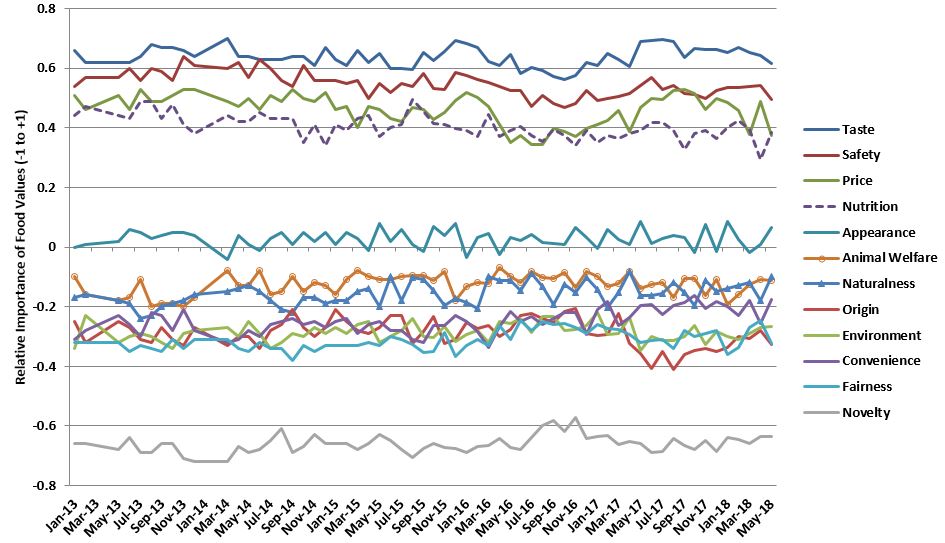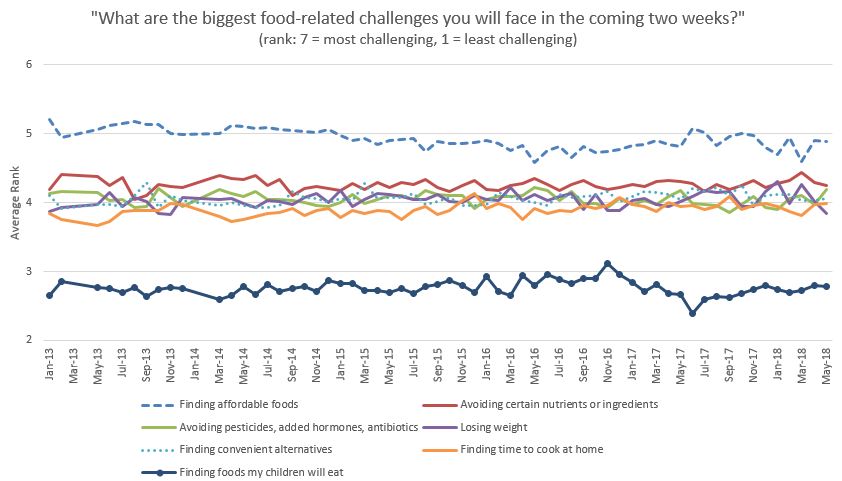What do you think about slow-growth chickens? If you're like most people I've asked, your answer is probably "what the heck is a slow growth chicken?"
Food retailers, however, aren't wondering because they're being asked by animal advocacy organizations to make new commitments to only buy chicken from slower-growing birds (here is the request in the EU and here is the Humane Society of the United States on the issue).
First, what is slow growth chicken? Here's from my new paper on the topic just released by the journal Poultry Science (references omitted):
“Genetic improvements have allowed poultry producers to rear broilers faster and to heavier weights than was possible in previous decades , with the result being more affordable chicken for consumers. However, some research has suggested that rapid growth may result in broilers that suffer from leg damage and pain. These ideas have recently gained traction in popular media and have led to calls for older heritage breeds of chickens, or newer slower growing chickens that are argued to be associated with improved taste and higher broiler welfare. Some research suggests little to no independent relationship between days of growth and consumer sensory evaluations of chicken , and other research suggests that slow-growing breeds are deemed less tender and less juicy than conventional chicken breeds. Nonetheless, consumer preferences for chicken may be as much affected by perceptions and labels than by actual sensory characteristics.”
The new paper reports on the results of some surveys I conducted late last year with about 2,000 U.S. chicken consumers for a project funded by the Food Marketing Institute, the Animal Agriculture Alliance, and the Foundation for Food and Agricultural Research (a fuller, un-gated report of the results is here). One of the main results is that most consumers don't know much about slow growth chickens, and as a result, positive or negative information can really sway people one way or the other.
One group of people were given no extra information. Another group of people received "pro" slow growth information from articles in NPR (as reported by Dan Charles) and the New York Times (as reported by Stephanie Strom), and yet another group of people received "anti" slow growth information from the National Chicken Council.
After receiving this information, consumers made a number of choices in a simulated retail environment showing packages of chicken breasts with different labels and prices. These choices were used to back out consumers' willingness-to-pay for the slow-growth label (at present there is no widely adopted slow-growth label, so I created one myself for use in this study). Here is the distribution of willingness-to-pay ($/lb) for slow growth and organic labels in the different information treatments.
Some of the most interesting results related to the extreme lack of knowledge people have about broiler production in general and slow-grown in particular. For example, here are some results when they were asked what they thought a variety of different labels implied.
The table shows the average beliefs about animal welfare, expense, healthfulness, safety, and taste of different labels. Without extra information, slow growth labels tended to be associated with disadvantageous beliefs. Without additional information, slow growth labels are associated with signaling the lowest safety, taste, and health of the labels considered.
Here's how I concluded the article:
“Given the disadvantageous beliefs consumers hold about slow growth claims, a substantial marketing effort would likely be needed for the attribute to become a major determinant of consumer choice. Given consumers’ lack of knowledge about broiler production, simply informing consumers of already existing practices (e.g., cage free and no added hormones) could be a more cost-effective way of boosting chicken demand. That said, it is possible that the presence of hormone absence labels may exacerbate the misinformation problem by indirectly suggesting that there are some brands of chicken that use growth hormones. While organic labels are associated with positive beliefs and are valued relatively highly by consumers, organic production entails significantly higher costs in comparison to non-GMO or no antibiotic claims.
Perhaps the most significant factor explaining the increase in chicken consumption over the past several decades is price. Increases in production efficiencies have reduced chicken prices relative to the price of beef and pork. Perhaps not surprisingly then, this study also shows price to be a major determinant of choice for consumers. Nonetheless, there is a non-trivial minority of consumers who are relatively unconcerned about chicken prices, and these consumers are the target market for the label claims considered in this study.”














